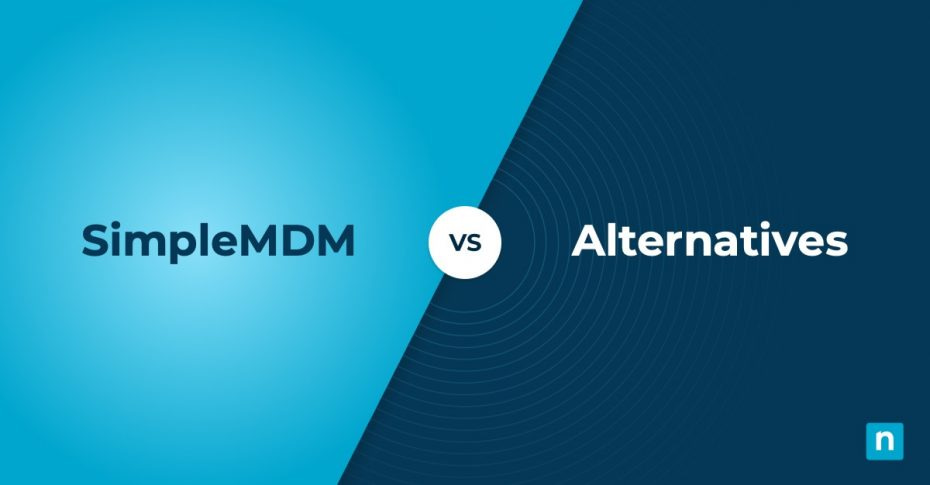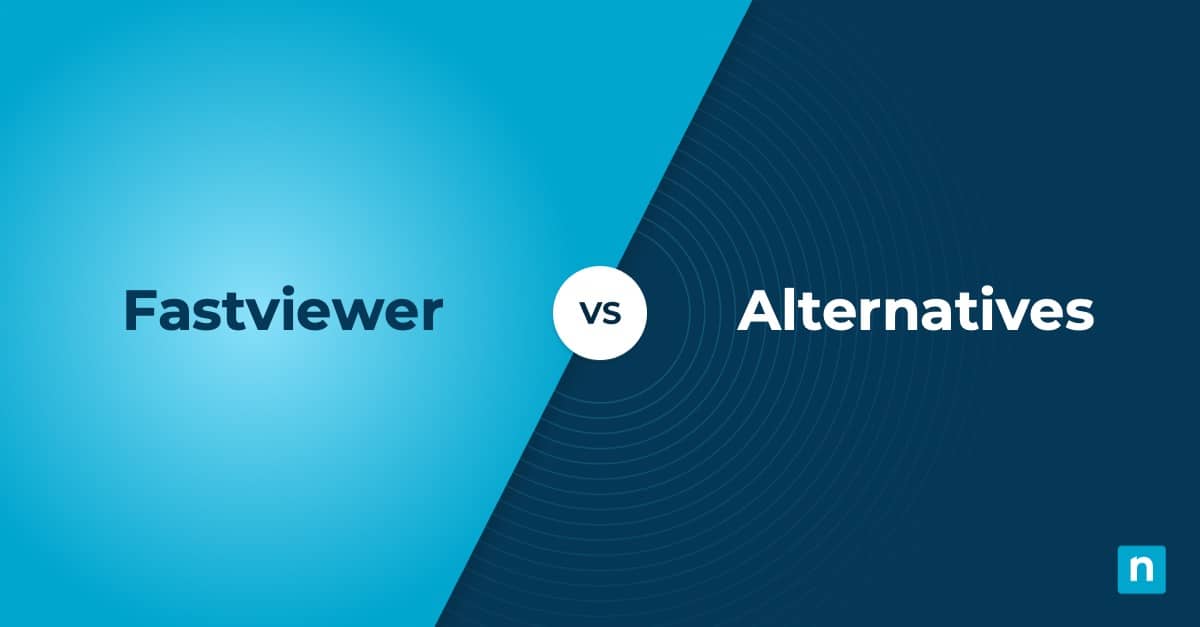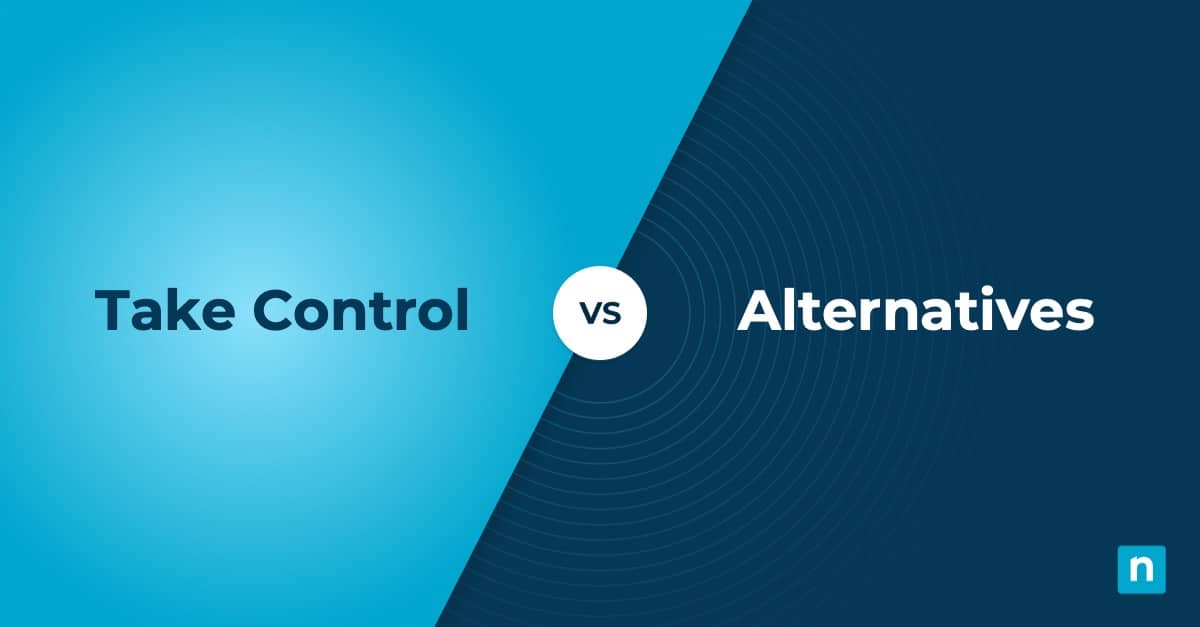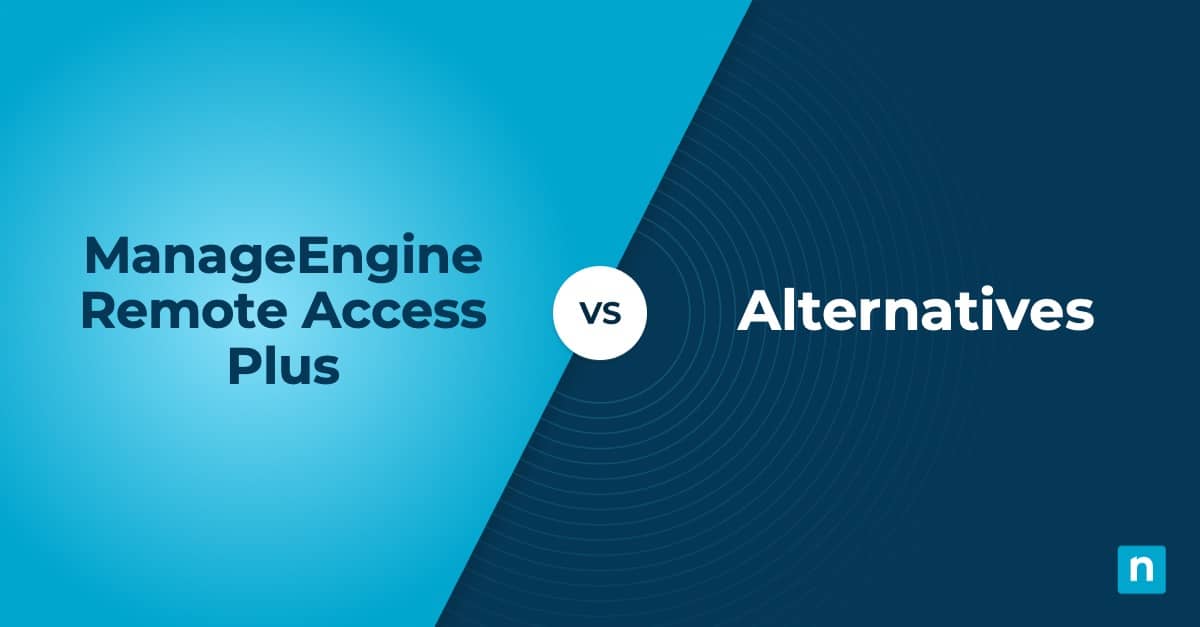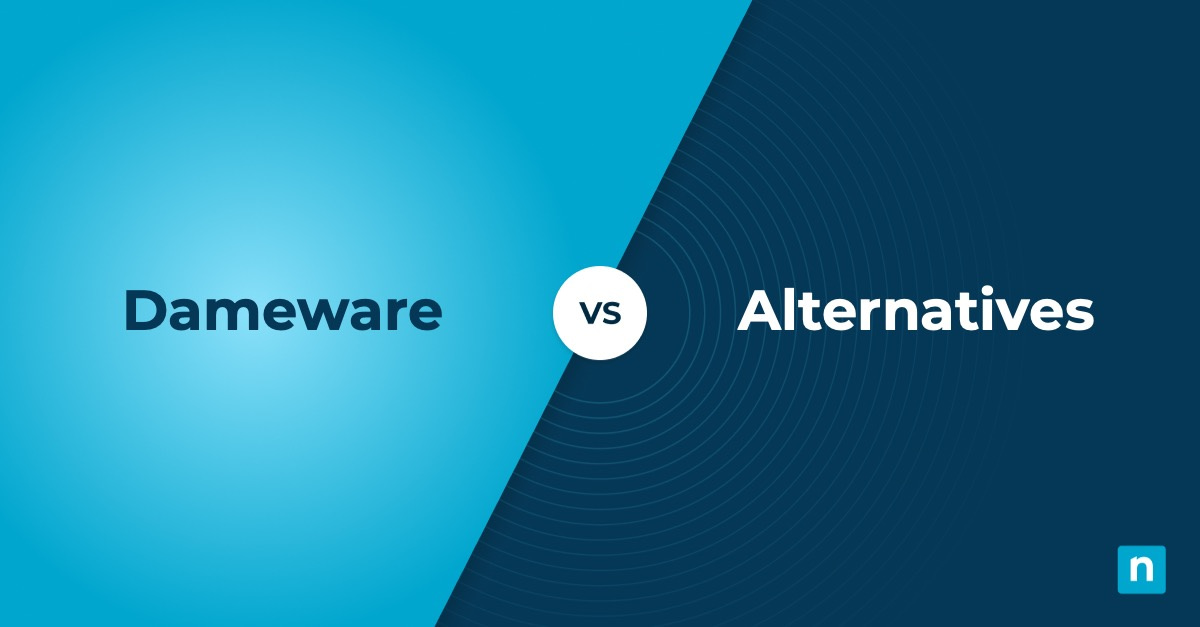Device management has become an essential part of IT administration. Today’s employment landscape has shown the efficiency of hybrid work setups. This has required organizations to enforce device policies like BYOD (Bring Your Own Device) and COPE (Corporate Owned, Personally Enabled). These policies call for efficient device management to ensure optimal security, data protection, and productivity while maintaining compliance with organizational policies.
SimpleMDM is a device management tool that offers a straightforward solution. The platform caters to the growing trend of Apple device adoption in corporate and enterprise environments. SimpleMDM is marketed towards Mac admins, guaranteeing smooth-flowing mobile device management for organizations with a significant Apple device presence.
However, some IT teams or businesses may seek alternatives that cater to a more diverse environment, since many organizations may have a mix of devices running on other mobile device operating systems. On the other hand, others may just be looking for another MDM alternative that supports Apple-centric environments. In this article, we have listed some SimpleMDM alternatives that you may consider to help you find the perfect fit for your organization’s needs.
1. NinjaOne
NinjaOne is known for its comprehensive endpoint management solution, which offers significant features that help streamline device management, including mobile devices. In addition to supporting iOS devices, the multi-platform device management supports endpoints and devices running on Android, iPadOS, and macOS. NinjaOne also consistently ranks #1 on G2, solidifying its position as one of the market’s best and most preferred IT management tools.
See how NinjaOne stacks up against the competition in the ESG Economic Validation Report—proof you can count on. Read now.
5 reasons to choose NinjaOne over SimpleMDM
1. Support for other mobile operating systems
As mentioned above, one of NinjaOne’s best functionalities is its support for mobile devices that run on various operating systems. This is a significant advantage for businesses and managed service providers catering to environments with diverse operating system landscapes. It also benefits end-users who prefer mobile operating systems other than Apple for their personal and professional needs. This comprehensive OS support enhances NinjaOne’s versatility and adaptability to diverse IT environments.
2. Complete endpoint management
Aside from mobile devices, NinjaOne is a comprehensive endpoint management solution that supports major desktop operating systems such as Windows and Linux. This is beneficial for organizations looking for an endpoint management solution that can unify their endpoint ecosystem under a single platform. A single platform that offers support for your mobile device and other endpoints is cost-efficient, time-saving, and streamlines workflow.
3. Support and service
NinjaOne has established a reputation for offering beyond satisfactory support to its users. In a third-party survey of 380+ MSPs, NinjaOne shines as #1 for support and service. The same survey also shows that the platform delivers an outstanding average response time of 65 minutes with a stellar 98% CSAT score. This only proves that NinjaOne is dedicated to providing quality support and service that goes above and beyond exceptional customer experience.
4. Empowering guidance
Along with stellar support and service, NinjaOne also ensures that users are equipped with extensive knowledge about the platform. This is fostered through enhanced documentation that provides clear and actionable steps for various tasks and troubleshooting. Moreover, NinjaOne offers free and unlimited onboarding and training. This is to help users maximize the platform’s capabilities while being able to initiate efficient, self-guided troubleshooting.
5. Remote access
While most MDMs offer the same feature, NinjaOne excels in remote access for its years of experience with remote management and monitoring technologies. NinjaOne enables technicians to access mobile device screens remotely for efficient troubleshooting and problem-solving. This promotes rapid response to minimize downtime, ensuring business continuity and enhancing overall user experience.
Strengths of NinjaOne
- “Single pane of glass”. NinjaOne’s whole platform is built around a “single pane of glass” approach that leverages a centralized console for an extensive overview of an IT infrastructure. This gives IT teams and MSPs comprehensive visibility of the environment they’re managing, leaving nothing unsupervised. The approach also helps them quickly identify, troubleshoot, and resolve issues across all connected devices and systems more efficiently and precisely.
- Device restrictions. NinjaOne MDM allows technicians to set restrictions on managed devices, enhancing security and preventing unauthorized actions on them. Restrictions enforced on actions such as installing unapproved applications or modifying critical device configurations can help protect a company’s sensitive data and maintain compliance with industry regulations.
- Easy device deployment. One of NinjaOne’s top strengths is its easy device deployment process. The platform aims to simplify the process and ease the complexities of device deployment. Strategies such as efficient bulk and zero-touch device enrollment speed up device onboarding, saving time and resources for IT teams, organizations, and device users.
- Remote actions. NinjaOne mobile device management is dedicated to enhancing device security by providing granular control over device functions through effective MDM remote actions, especially in the event of device compromise, theft, or loss. The MDM solution’s take on remote actions allows technicians to perform device lock/wipe, passcode reset, and more, ensuring that sensitive data remains protected and business continuity is maintained.
Customer story
When Cary Wagner, the owner of Pacific Northwest Managed IT Services, needed mobile device management for his managed service provider venture, NinjaOne impressed him with the platform’s efficiency, speed, and positive impact on his business. Here’s what he has to say about the endpoint management solution:
“Deploying NinjaOne MDM to our Apple mobile devices was so quick and painless. In less than 15 minutes, we were connected to our device.”
Wagner also expressed his satisfaction with how NinjaOne has helped him with device security and streamlining his workflow through its single-pane-of-glass approach.
“Being able to manage, remotely access, and troubleshoot issues on our mobile endpoints in the same pane of glass we manage the rest of our endpoints makes our lives so much easier. Mobile device management with NinjaOne means an increase in visibility and security for our customers.”
Read more NinjaOne customer stories or check out NinjaOne reviews.
Reviews
- 1,264 reviews (at the time of writing)
- 4.7 / 5 stars
- 220 reviews (at the time of writing)
- 4.8 / 5 stars
2. Jamf Pro
Jamf Pro is a mobile device management solution built for enterprise-level IT ecosystems. The platform best fits organizations with mobile devices running Apple operating systems. Suppose you are looking for a SimpleMDM alternative that specifically addresses the unique needs of devices running on iOS, iPadOS, and macOS operating systems. In that case, you may consider adding Jamf Pro to your list of considerations
Pros
- Remote assist. Efficient remote assist, which uses in-product remote screen-sharing, allows technicians to resolve issues with end-user devices remotely.
- Centralized console. Like other mobile device management solutions, Jamf Pro features a single console with centralized management for streamlined IT tasks.
- App lifecycle management. Jamf Pro enables technicians to leverage automated app management throughout each device’s lifecycle from initial deployment to app removal.
Cons
- Support. Jamf Pro users shared their feedback on its customer support, saying that the platform could improve in this area.
- Steep learning curve. Some users of the platform pointed out that getting accustomed to using Jamf Pro within the initial phases may be challenging, taking them some time to become proficient with the platform.
- User interface. Some reviews of Jamf Pro highlight its user interface, saying that it could benefit from enhancements to improve usability and navigation for end-users.
3. JumpCloud
If you’re looking for an alternative to SimpleMDM that also supports devices running operating systems other than Apple’s, JumpCloud can be a viable option. The cloud-based directory solution features MDM functionalities that allow organizations to manage user access and device settings across operating systems other than iOS and iPadOS, such as Android.
Pros
- Automation. JumpCloud features useful automation capabilities for user provisioning and de-provisioning tasks, making it easier for technicians to streamline repetitive processes and reduce manual effort.
- Integrations. The platform leverages functional integrations with tools, allowing IT teams and organizations to maximize JumpCloud’s full potential as an MDM solution.
- IT security. With JumpCloud, IT professionals can configure device policies, push out critical security patches, and enable multi-factor authentication to better prevent unauthorized access to sensitive company data.
Cons
- Reporting. JumpCloud users have expressed a need for more robust and intuitive reporting capabilities within JumpCloud to facilitate efficient audits.
- Customer support. Some platform users pointed out that JumpCloud’s customer support may need some improvement. Some reviews said support can refine their response time and provide more comprehensive solutions.
- Navigation. Some reviewers of JumpCloud have expressed their feedback regarding the platform’s user interface, specifically its dashboard, which can be challenging to navigate.
Choosing the best SimpleMDM alternatives
Your next step in deciding on a mobile device management solution should depend on your infrastructure’s requirements. You may be managing an IT infrastructure consisting of devices running exclusively on operating systems developed by Apple. On the other hand, you have a diverse pool of endpoints that need a comprehensive MDM solution. These requirements will dictate the specific features and capabilities you should prioritize when choosing an MDM platform.
Evaluating your MDM options is a crucial step. Along with this comprehensive list we curated, you can start initiatives such as trying out demos or starting a trial for the mobile device management solutions you are considering. This way, you can make an informed decision that will truly benefit your organization.

